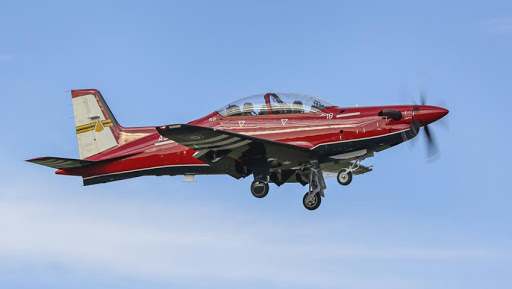The RAAF’s Aircraft Research and Development Unit (ARDU) has welcomed Air Force’s newest test and evaluation capability with the arrival of three Pilatus PC-21 aircraft replacing the retired PC-9.
The Pilatus PC-21 is the world's most advanced pilot training aircraft.
As part of the AIR 5428 Pilot Training System project, the PC-21 will replace Air Force's current PC-9/A. It will be based at RAAF Base East Sale in Victoria and RAAF Base Pearce in Western Australia.
ARDU Commanding Officer Wing Commander Matthew Noblet said air power had rapidly evolved within a highly integrated and complex battlespace.
"ARDU was established in 1943 to support aircraft research in areas like aerodynamics, systems, performance and weapons clearance," WGCDR Noblet said.
"To achieve that, ARDU has maintained a unique set of skills and experience that has been required to evolve with each generation of technology.
"Flight test aircrew are initially taught the skills at international test pilot schools required to support flight test in the modern battlespace.
"The three Pilatus PC-21 are a leap in technology that will better enable the raise, train and sustainment of the flight test capability.
"The aircraft offer improved opportunity to enable flight test for Air Command."
Flight test is an activity where the purpose of the flight is to answer a question – the question may be on the effectiveness of a new capability, evaluating a new tactic, proving compliance against a safety standard or assisting in the development of a new system.
This information is then used by commanders to risk mitigate operational decisions.
The Air Warfare Centre and ARDU have access to a wide range of external agencies and often broader test resources to support the operational Force Elements Groups.
Although the PC-21 is a key element of the AIR 5428 project, it is only one part of the story. The new Pilot Training System will be able to train more people faster and to a higher standard, with an:
- advanced aircraft;
- state of the art simulation; and
- an electronic learning environment.
The system will ensure undergraduate pilots develop the necessary knowledge and skills prior to progressing onto advanced military aircraft such as the F-35A Joint Strike Fighter, Armed Reconnaissance Helicopter, and MRH-90 helicopter.
The Pilatus PC-21 is equipped with:
- a pressurised cockpit;
- air conditioning;
- an anti-G system; and
- on-board oxygen generation.
It is capable of sustained low-level speeds over 320 knots, and hydraulically assisted ailerons and roll spoilers can produce fighter-like rates of roll in excess of 200 degrees per second.
A digital power management system and automatic yaw compensation makes the PC-21 easy to fly in the circuit, while still providing the performance required for advanced training.
The capabilities of the PC-21 make it ideally suited to a very wide training scope. It can be used from day one in the training system, eliminating the need for an elementary flying training fleet, but also bridges the performance gap between traditional turboprop trainers and lead-in fighters.


